Posted on
March 28, 2025 by
The VRG Blog Editor
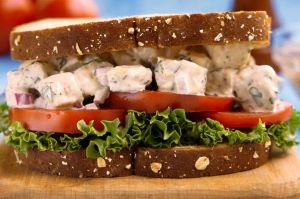
Tempeh Salad Sandwich photo by Hannah Kaminsky
Tempeh hails from Indonesia where it is still eaten by people of all walks of life. Tempeh is made fresh daily by thousands of small family-run shops and sold within hours of completion. Soy tempeh is simply made from soybeans, water, and a culture.
In the latest Vegan Journal, Seth Tibbott introduces several tempeh recipes including Finger Lickin’ Tempeh; Low-sodium Tempeh; Marian’s Tempeh Stroganoff; Tempeh Salad; and Tequila Tempeh.
Find the recipes here: https://www.vrg.org/journal/vj2025issue1/2025_issue1_tempeh.php
Subscribe to Vegan Journal in the USA only here: https://www.vrg.org/member/
Category
Uncategorized
Comments
0
Posted on
March 28, 2025 by
The VRG Blog Editor
Category
Uncategorized
Comments
0
Posted on
March 27, 2025 by
The VRG Blog Editor

photo from Bob’s Red Mill
by Reed Mangels, PhD, RD
You’ve seen the headlines – “Egg Prices Set Another Record,” “U.S. Egg Prices Hit a Record High and Are Likely To Keep Climbing.” Many consumers are visiting multiple stores, trying to find the lowest price for a dozen eggs. My local supermarket is limiting customers to 2 cartons of eggs per visit.
Vegans have always found creative ways to avoid eggs. For example, there are many vegan alternatives to eggs that can be used in baking. We’ve chronicled these in Vegan Journal, on our website, in hand-outs, and on our blog.
Could these alternatives be promoted to non-vegans as a way to save money? I wondered about this, so I decided to compare prices of vegan egg replacers at a large supermarket chain in central California to the price of eggs at the same chain. I used regular, non-sale prices for all items. My informal survey was conducted the week of March 10, 2025. While prices will vary by region, by store, and other factors, there was a clear trend for vegan egg replacers to cost markedly less than eggs.
A dozen large eggs cost $10.99 making the cost of a single egg $0.92.
Some common vegan replacements for one egg for baking cost:
- 1 Tablespoon ground flaxseeds + 3 Tablespoons water $0.08
- 2 Tablespoons cornstarch mixed with water $0.09
- 2 Tablespoons water + 1 Tablespoon oil + 2 teaspoons baking powder $0.18 ($0.08 for oil + $0.10 for baking powder)
- 1 Tablespoon Bob’s Red Mill Egg Replacer + 2 Tablespoons of water $0.19
- ¼ cup unsweetened applesauce $0.20
- 1 Tablespoon chia seeds + 3 Tablespoons water $0.24
- ½ cup puréed or mashed very ripe banana $0.29
- ¼ cup plain vegan yogurt $0.57
- ¼ cup canned pumpkin $0.64
- 3 Tablespoons Just Egg $0.90
- ¼ cup blended silken tofu $1.05
- ¼ cup puréed prunes $1.12
Of the twelve egg replacers, only 2 cost more than an egg. The others cost anywhere from 2 to 84 cents less per egg.
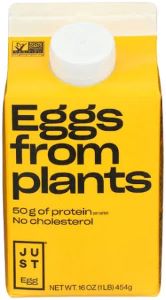
photo from JUST Egg
To read more about vegan egg replacers see:
Quick and Easy Ideas for Egg Replacers
Eggs Aren’t Necessary to Make Scrambled “Eggs” or “Omelets”
Egg Shortage – No Problem! Make a Vegan Cake
Category
Uncategorized
Comments
0
Posted on
March 27, 2025 by
The VRG Blog Editor
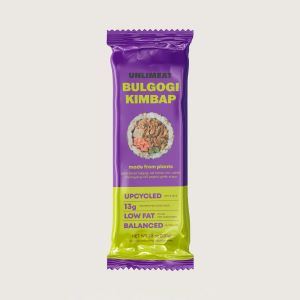
photo from Unlimeat
Korean Kimba are making big waves in the United States. They are typically made from rice wrapped around a generous helping of pickles and meat or eggs. Unlimeat Kimbap use all plant-based ingredients including oat konjac rice. Read our review in Vegan Journal: https://www.vrg.org/journal/vj2025issue1/2025_issue1_veggie_bits.php
https://www.vrg.org/member/2013sv.php
Category
Uncategorized
Comments
0
Posted on
March 26, 2025 by
The VRG Blog Editor
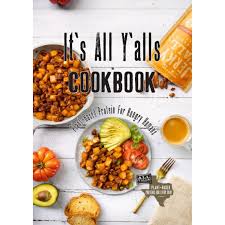
Vegan Journal Senior Editor Hannah Kaminsky has written a book that features All Y’alls Foods products such as vegan jerky and crunchy vegan bacon bits. Enjoy recipes such as Cheesy Potato Soup; BBQ Sandwiches; and Maple Bacon Blondies.
Read the entire book review here: https://www.vrg.org/journal/vj2025issue1/2025_issue1_book_reviews.php
Subscribe to Vegan Journal in the USA only here: https://www.vrg.org/member/
Category
Uncategorized
Comments
0
Posted on
March 26, 2025 by
The VRG Blog Editor
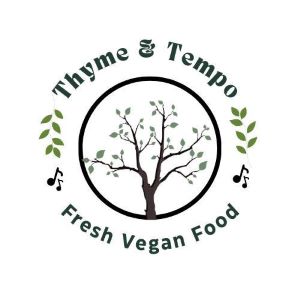
Come meet dietitians from the Vegetarian Nutrition Dietetic Practice Group and VRG members. The public is invited. You must preregister. You can pay at www.vrg.org/donate Write in names of attendees and that this is for the Networking dinner.
When: Sunday, October 12, 2025, 6 PM
Place: Thyme and Tempo Vegan Restaurant
Menu:
- Quinoa chili with tomato, organic quinoa, beans, olive oil, kale, organic corn, onion, and spices.
- Music City Power Bowl with sweet potato, corn & mango salsa, black beans, guacamole, vegan sour cream, broccoli, beets, carrot, lettuce, mung beans, pumpkin seeds, corn chips, and basil vinaigrette.
- Vegan chocolate chip or oatmeal cookie
Cost: $30 before September 12, 2025. $35 before October 1, 2025. Includes tax and tip.
Drinks can be purchased from the restaurant separately. PLEASE PAY AT www.vrg.org/donate and write in the Comments: Networking Dinner with the Attendee names. Or call (410) 366-8343. Or mail payment to The Vegetarian Resource Group, P.O. Box 1463, Baltimore, MD 21203. We look forward to seeing you there.
Category
Uncategorized
Comments
0
Posted on
March 25, 2025 by
The VRG Blog Editor
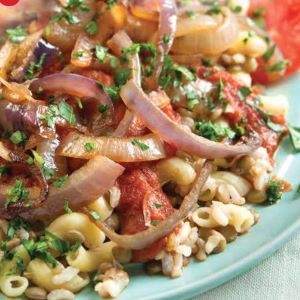
Kasheri with Brown Rice
Chef Nancy Berkoff shares Egyptian recipes she gathered when visiting her former students living in Egypt. Enjoy Kasheri with Brown Rice, Brown Rice Mujaddara, Makloubeh (layered eggplant), Vegan Kofta, Orange and Olive Salad, Khoshaf (compote), and Egyptian Lemonade.
Find the complete article here: Vegan Recipes from Egypt
Subscribe to Vegan Journal: https://www.vrg.org/member/2013sv.php
Category
Uncategorized
Comments
0
Posted on
March 25, 2025 by
The VRG Blog Editor
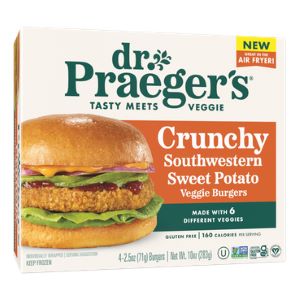
photo from Dr. Praeger’s
Addressing the common complaint that veggie burgers can be too mushy, Dr. Praeger’s takes their latest line of crunchy patties in the opposite textural direction. Read our review in Vegan Journal: https://www.vrg.org/journal/vj2025issue1/2025_issue1_veggie_bits.php
https://www.vrg.org/member/2013sv.php
Category
Uncategorized
Comments
0
Posted on
March 24, 2025 by
The VRG Blog Editor
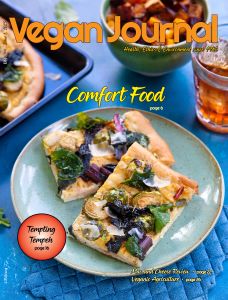
Each issue of Vegan Journal includes reviews of the latest scientific research related to the veggie lifestyle. Topics covered in the most recent magazine include Does the Addition of Olive Oil Improve a Whole-Food, Plant-Based Diet, as well as Vegan Diets in the United Kingdom
Read the entire column here: https://www.vrg.org/journal/vj2025issue1/2025_issue1_scientific_update.php
Subscribe to Vegan Journal in the USA only here: https://www.vrg.org/member/
Category
Uncategorized
Comments
0
Posted on
March 24, 2025 by
The VRG Blog Editor
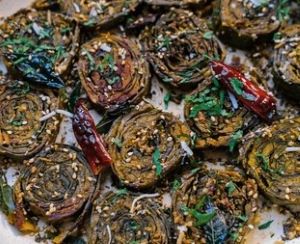
photo from Shutterstock
According to Chef Nancy Berkoff, EdD, RD, Patra is a popular Gujarati vegetarian snack or ingredient used in main or side dishes. It is a rolled, filled menu item that resembles a green and gold pinwheel when sliced. Patra is also known as pathrode, and the leaves are sometimes called aloo or even elephant ears. The taro leaf is the traditional wrapper; however, spinach or collard leaves can be substituted when making your own patra.
There are many different ways to prepare patra, just like any beloved traditional dish. Patra is rolled up with tamarind paste and a variety of spices, steamed to solidify the filling, and then sliced and fried.
Besan is usually the main ingredient in the filling or paste for patra. Besan is garbanzo bean flour, also called gram flour. It is not a finely ground flour, and the grittiness actually adds texture to recipes in which it is used. Besan can be found in Indian markets and online, but it is easy to make your own. Simply lightly toast cooked garbanzo beans in a hot oven until they are crispy. Grind the crispy garbanzos in a food processor or by hand with a mortar and pestle.
Nowadays, many households cut to the chase and purchase canned or frozen patra, which can be micro-waved or quickly fried. If you are looking for canned or frozen patra, you might also search for alu wadi, which is patra in the Marathi dialect. Canned or frozen patra are usually sliced before packaging. When you open the package, you will see swirls of dark green and gold. You can microwave, steam, or fast-fry canned or frozen patra, depending on your time and your needs. Patra have a wonderful fragrance of spices, including ginger, chili, and garlic. In addition, if rolled correctly, the leaves and filling form a delightfully chewy, almost meat-like texture.
Recipes using patra can be found here: https://www.vrg.org/journal/vj2008issue4/2008_issue4_patra_issue.php
Subscribe to Vegan Journal: www.vrg.org/member
Category
Uncategorized
Comments
0











